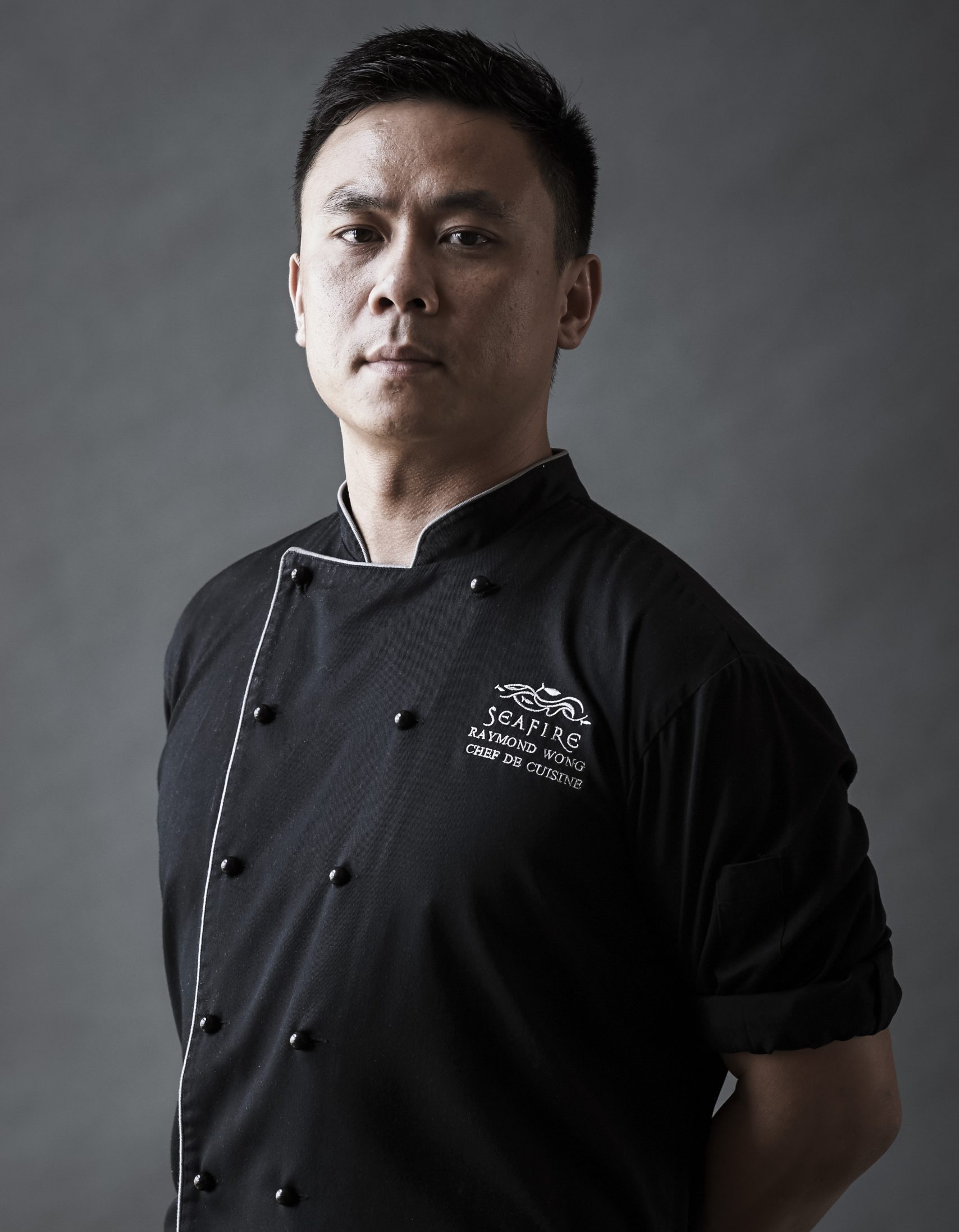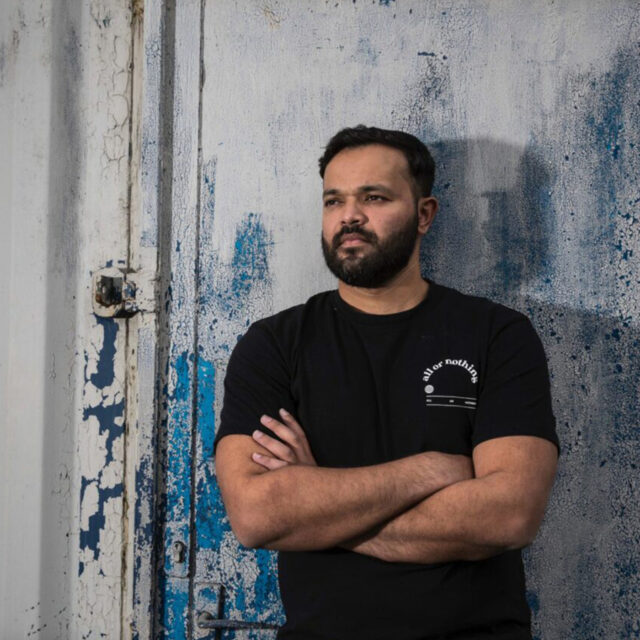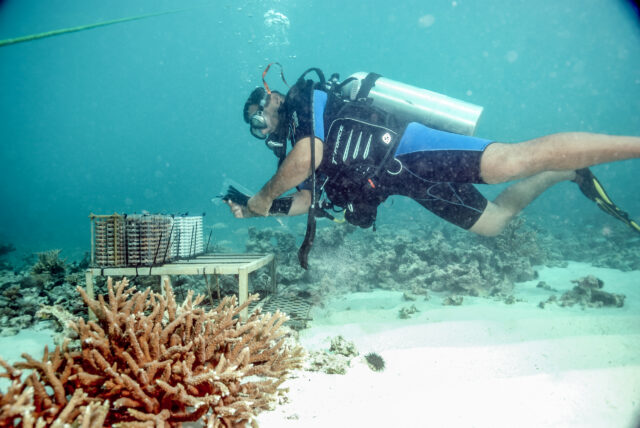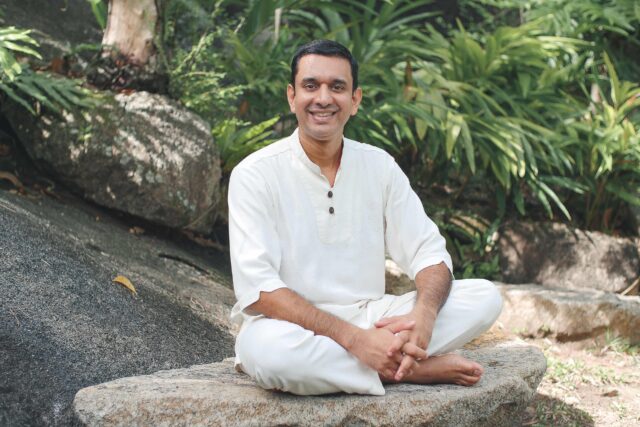The recent UAE Sustainable Eating Awards celebrate the top chefs who are taking care in their kitchen.
They are using local ingredients in their recipes, reducing food and kitchen waste, making use of sustainable suppliers, and are committed to boosting food security. Shortlisted chefs were asked to submit a dish that was 100 percent made up of locally sourced foods and from there three overall winners were chosen. One of the top honors went to Raymond Wong, chef de cuisine at Atlantis’ Seafire Steakhouse, and head of the sustainable food initiative at Atlantis, The Palm, who entered the restaurant’s Organic Salmon Carpaccio dish.
Chef Wong gave us the lowdown on local food production in the UAE, why we should all be aiming at eating sustainably and how we can start in our own kitchens.
What does sustainable eating actually mean?
Sustainable eating is being conscious about where your food is coming from, understanding if it is produced locally or imported from elsewhere, and recognizing the impact that this has on the environment. Not everything can be sourced locally, but it is important to support local farms and suppliers where we can, as this inevitably creates a knock-on effect that supports growth in the local economy.
Why else is it so important?
Sustainable eating is extremely important when it comes to the wider sustainability mission. As one of the largest operators of restaurants in Dubai, at Atlantis, The Palm we feel that it’s our responsibility to lead the way and to support local farms and partners. As more and more of us make big volume orders on a regular basis, the more produce local farms can grow and the more commercially viable it is for everyone as pricing is then more effective.
Should regular people also be buying locally grown produce?
The more that people select local produce and incorporate it into their regular eating habits, the more it supports the farms so that they can continue to expand. Two years ago when we started our sustainability journey, it was more challenging, simply because of the amount of produce we needed as well as daily deliveries, and it was difficult for the farms to supply to our demand that quickly. That said, companies such as Fresh on Table have really been a game-changer as their involvement has facilitated the amalgamation of farms and local food suppliers across the UAE to ensure that the consistency and volume of produce is now there, and it’s improving daily.
Is there really enough locally-grown food for us all?
Despite what many may perceive as long-term roadblocks, such as the desert environment, I really feel there is no limit to what can be done in this space. The country has already developed a thriving home-grown agricultural industry, and this paired with the speed in which the country adopts innovation surrounding agro-tech and food technology, means I have no doubt that the sector will just continue to accelerate. When the farms continue to grow, we all grow.
What sort of foods should I be buying?
There are many fantastic sustainable and locally sourced foods available in the UAE and luckily there are now hundreds of local farms and suppliers we are able to go to for fresh, locally produced products. Outdoor and hydroponic farms offer quality products such as micro greens, salads, dates, and fruit and vegetables. There is a wonderful Aquaculture fish farm in Jebel Ali that organically farms a huge variety of fish including organic salmon, royal sea bream and seabass. Some more unusual but delicious items include locally handpicked mushrooms, locally produced burrata, local honey and even oysters.
Can top restaurants really get most of their ingredients locally?
Our chefs are ordering up to 20 local, sustainable key ingredients every day, 122 out of 238 seafood ingredients used across all 35 of our restaurants are now certified sustainable, and we are continuously finding imported items we can swap for local ones. As an example, we are adding Dibba Bay local oysters to our menu versus imported ones.
Other chefs can start by getting in touch with companies like Fresh on Table, visiting the local suppliers and farms, and begin to understand what is available and what easy swaps can be made. We can reach out to other chefs and see what they’re doing to learn from each other. The more restaurants that take part, the more financially viable it is for everyone to support local.
How can we reduce kitchen waste?
One of the easiest ways to reduce kitchen waste is finding alternative uses for leftovers during the cooking process. At Seafire Steakhouse, for example, we use the tenderloin trimmings for the beef tartare and we use fish trimmings, especially the skin, as part of an amuse bouche. We have also created a butter from the dry ageing fat, which is used in several ways in the restaurant, from keeping the meat from sticking to the grill using the dry ageing butter to serving it over the amuse bouche popcorn. These are all items that could go into the bin, but we’re able to find other uses. Another way we reduce waste is using scraps for various stocks — leftover vegetables are used to make vegetable stock, and beef scraps are used for beef stock — something anyone can do at home. We have also recently partnered with the Stray Dogs Center to donate buffet leftovers twice weekly, which helps feed more than 700 of their rescue dogs and reduces the waste from our food service.
What other tips do you have for sustainable cooking?
The main tip is to just be more mindful, especially when you’re shopping for food. Most supermarkets today display where the produce and food products are coming from, giving consumers an opportunity to make a conscious decision to think local when making purchases.
Tell us about the recipe you entered…

The recipe is for Organic Salmon Carpaccio, one of the sustainable and locally sourced dishes available at Seafire Steakhouse. We started by visiting the local farms to see what was even available, and I was inspired by the salmon they were culturing at the Jebel Ali Fish Farm. I’m from Scotland, so I’ve often worked with salmon as it’s so plentiful there. This salmon however is different from Scottish salmon in flavour and texture because it is so fresh, so I decided to cure it. We cure it for 24 hours in a beetroot brine, which incorporates the flavour and the colour into the fish. I think it’s a delightful and elegant dish that is representative of Dubai and also where I come from.






